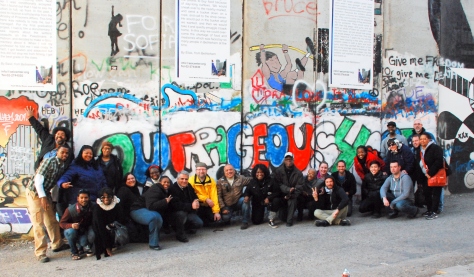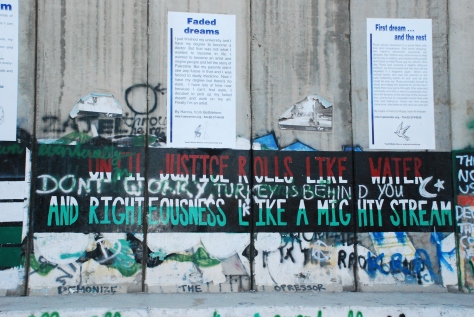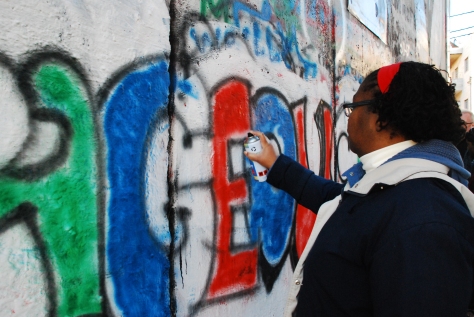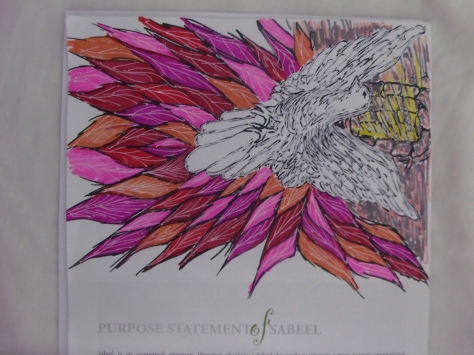As we end our Outrageous Hope Study Trip in the Holy Lands, included on the agenda was a visit to a Jewish settlement. During this visit we were welcomed and had a discussion with an resident in a Synagogue. In our dialogue, the settler’s closing words were, “They [Palestinians/ Non-Jews] are the bad guys and we [the Jews] are the good guys. It’s just that simple.” He made this comment in the Jewish holy place of worship, the Synagogue. This has been my second encounter with a Jewish settler, and both have stated similar ideologies, which is frightening. This unfortunate reality reminded me of an “us versus them” theology. A theology that is dangerous and very exclusive. A theology that only looks at one side of the narrative and does not take a look at the other.
This type of theology has been used to justify the nearly extermination of Native Americans by the Europeans. This type of theology has been used to justify the bringing of Africans to North America for slavery. This type of theology has been used to justify Apartheid and other injustices throughout history and that are currently present in our world today. As Naim Ateek suggests, “God is being used to legitimize and sanction crime.” When God is being used to justify the unjustifiable, when God is being used to legitimize what cannot be legitimized, this becomes a problem in every aspect of life! We cannot and must not use God to justify the killing of children, using military occupation and causing harm to thousands of peopleto occupy a piece of land! How does that make God look?
The one thing that I will take away from this trip is reading the scriptures from a Palestinian Christian perspective. I have always understood the Zionist movement. I had once believed in it myself, but let us look at what the Zionist movement is doing to innocent babies.
Look around Palestinian territories and you will find refuge camps, trash everywhere, destroyed villages, children walking around alone, and an ugly grey Apartheid wall. A wall that costs a lot of money and that could have went to help the Palestinian neighborhood rather than separate them and exile them from the community. Does this sound like an all loving God to you? I do not think so. I invite you to read scripture in the eyes of the Palestinian. We do not need a replacement or displacement theology. But what we need in this conflict and peace and healing.
The killing has to stop and so does any form of oppressive theology. At the end of the day, we are all God’s children. The Bible say, “There is no longer Jew or Greek, there is no longer slave or free, there is no longer male and female; for all of you are one in Christ Jesus. (Galatians 3:28)”
I am not taking a side on this issue, but I chose to stand for the oppressed and fight for justice. It takes an outrageous hope to stand for those who are oppressive and marginalized. I am willing to have that outrageous hope in the God of justice and liberation of all people. I believe this is the God that Mohandas Gandhi put his hope in. I believe this is the God Dr. Martin Luther King Jr. put his hope in. I believe this is the God that Nelson Mandela put his hope in. And this is the God I chose to put my outrageous hope in.
Tiggs Washington




















